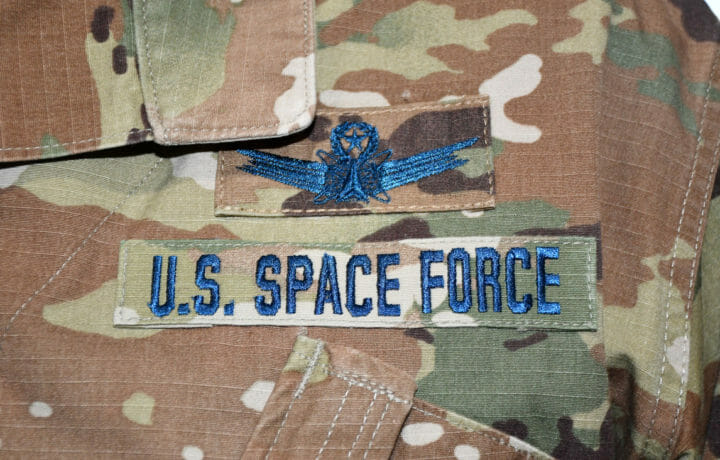The United States has (and has had for a long time) maintained a military dominance with its five military branches:
- Army and Marines on land
- Air Force in the air
- Navy and Coast Guard at sea
But one domain no one controlled that was crucial to maintaining our dominance posture is space. Enter the newest and sixth military branch – U.S. Space Force. This service branch is the first addition to the list in over 70 years; the last one was the establishment of the U.S. Air Force in 1947.
U.S. Space Force Origins
Space Force came about when the White House directed the Pentagon to start planning for a space force on June 18, 2018. On December 20, 2019, it was signed into law as part of the 2020 National Defense Authorization Act. A report to Congress on the Space Force explained in part that the mission of the new command will include “joint space warfighters who will provide space expertise to combatant commanders … and surge expertise in time of crisis to ensure that space capabilities are leveraged effectively in conflict”.
For now, Space Force will fall under command of the Air Force, much like the Marines fall under the Navy. But when fully stood up, Space Force will have its own identity, including its own Under Secretary of the Air Force for Space.
Air Force or Navy Rank Structure
Once fully staffed, the newest combatant command will be commanded by a four-star General or high-ranking Flag officer at the top followed by a typical Air Force officer/enlisted structure underneath … for now. However, Rep. Dan Crenshaw (R-Texas) proposed an amendment to the House version of the 2021 National Defense Authorization Act that formally suggests the rank structure to mirror that of the Navy.
Why? To better distinguish Space Force personnel from those in the Air Force; much like the Marines rank structure differs from the Navy (although the Marines fall under the Navy as mentioned before). Until a determination is made in regard to the proposed amendment, enlisted Space Force personnel will be called “airmen”.
Space Force Prepares for Launch
At the beginning of September 2020, the U.S. Space Force was comprised of 88 uniformed members of which 87 were officers. The only enlisted person was the Senior Enlisted Adviser of the Space Force, Chief Master Sergeant Roger Towberman.
However, during the month of September, the Air Force began transferring 2,410 active-duty members into the Space Force mainly from the 13S (space operations) and 1C6 (space systems operations) career fields. While many of the enlisted positions will be filled by existing Air Force personnel (and qualified personnel from other branches), the Space Command did swear in seven of its own new recruits on October 20th.
The new recruits will take their 7.5-week Basic Training at Joint Base San Antonio, TX. While these new recruits will wear the same OCP (occupational camouflage pattern) uniforms as their fellow Air Force trainees, Space Command recruits’ nametapes will have a dark navy-blue background shade called “space blue” to differentiate them from the other Air Force recruits. Also Space Force recruits will have tablets loaded with Space Force-specific doctrine and information and will receive over 20 hours of specialized instruction and mentoring away from other fellow Air Force recruits.
And many of these new Space Force recruits will eventually attend the NCO Academy of the Space Force, which when stood up at a date to be determined, will reside at Peterson Air Force Base, CO.
Space Force Organizes and Evolves
Peterson AFB also hosts U.S. Space Command. SPACECOM is responsible for military operations related to space, while the U.S Space Force organizes and trains personnel. Like the other military branches, the Space Force has its headquarters at the Pentagon.
And Space Force will soon have its first astronaut; U.S. Air Force astronaut Col. Michael Hopkins, currently deployed on the International Space Station, will soon transfer to the Space Force while still on the ISS.
It will be interesting to see how this branch – the first new one in over 70 years – will develop and evolve as it is tasked with future missions in space.




